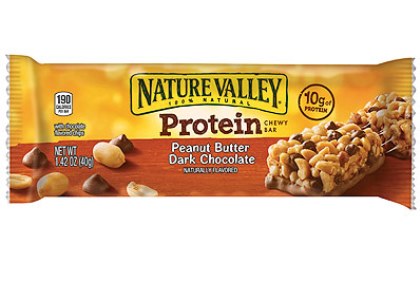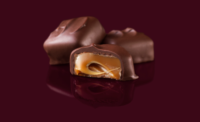
FONA International, a leading flavor manufacturing company, thinks the future of protein is dessert.
The company’s latest trends report, Protein Reigns Supreme, by Pamela Oscarson, market and consumer insights lead, details the growing popularity of protein, detailing all the new ways Americans are finding to get their protein fix.
“Recent studies have shown that protein is best consumed in smaller amounts throughout the day, resulting in greater protein retention — contrary to the typical 45 percent American intake at dinner,” FONA explains. ”As consumers increase their protein intake throughout the day, expect to see a demand for high-protein snacks and meals that can be consumed on-the-go.”
Specifically, FONA sees Americans eating more protein in desserts, chocolate and snacks.
“Currently, only 36 percent of consumers who work out eat high-protein products after exercising for muscle recovery,” FONA says. “Enhancing chocolate with protein, nuts or whey powder could be a new post-workout opportunity for chocolate confectionery and new flavor and positioning opportunities for manufacturers”
Women, especially, are looking for more ways to get their protein, with the goal of managing their weight, reducing fat and developing lean muscle. .
“When shopping for groceries for either themselves or their families, 79 percent of women were interested in protein-rich food,” the report states.
FONA also sees a growing protein market for foods targeting kids.
“The fact that kids are big snackers, like colorful packaging, and lead a fast-paced lifestyle creates opportunity for high-protein energy sources that are fun, taste great and carry kids from activity to activity,” the report says.
And, vegans looking for high protein foods are another potential growth area.
“In the U.S., products that had a combined claim of being both high protein and vegan showed a 100 percent growth from 2012-2014,” the company says. “This signifies that opportunity exists for manufacturers who can offer both high protein and vegan formulations.”
As for how Americans want their protein to taste, the report shows that the top high-protein food flavors were: chocolate, chocolate/peanut butter, strawberry, peanut butter, blueberry vanilla, and cookies and cream.So what’s driving consumer’s desires for high protein products?
Well, some of it is goal-oriented, with 57 percent of consumers making it their mission to consume more protein. Specifically, consumers aged 18-34 and 65+ were the most likely to seek out protein.
Consumers are also looking for energy. Two-thirds of adults (64 percent) think protein helps provide energy throughout the day; 62 percent believe it helps maintain energy levels, the report states.
In addition, 39 percent of U.S. consumers are eating more protein to help build muscle and 32 percent to maintain muscle mass.
Also, of the consumers eating more protein, almost half (46 percent), are doing so to help maintain a healthy weight and more than a third (38 percent) have increased their protein intake to help them lose weight.
So what types of foods are consumers looking to for protein? Well, in addition to cereal and meal replacement beverages, they’re also looking to snacks.
“As consumers are snacking more than ever due to their fast-paced lifestyle and the need to keep up energy throughout the day. Not coincidentally, the snack food category represents the most launches of high protein foods,” the report states. “In 2014, 19 percent of all high protein foods and drinks launched in the U.S. were snack bars.”





